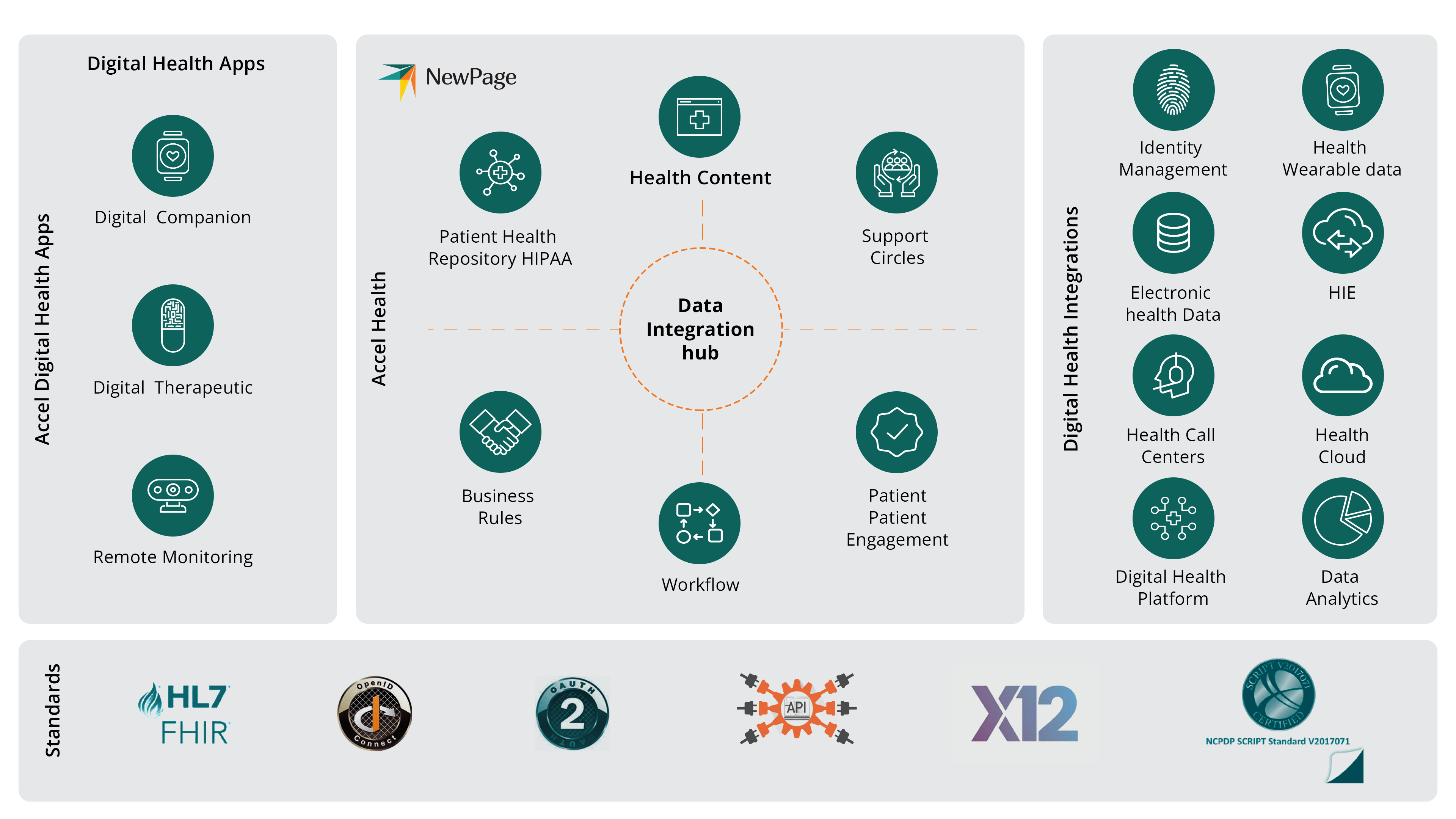Patient support programs (PSPs) have evolved from being a nice-to-have to a must-have for pharma companies. Patients today expect more than just a drug to treat their health conditions. They also expect quality support services that are personalized, timely, and convenient. They seek assistance that can help them understand, access, use, adhere to, and benefit from their medication.
So, how do pharma companies respond to this demand to impact both patient outcomes and their business success? What are the key strategies for commercial success with digital health technologies, like patient or companion apps, that efficiently bridge the gap between patient needs and PSPs? And how do they open up new possibilities for developing and delivering innovative, impactful, cost-effective PSPs? Let’s explore this topic in greater detail.
The current state of patient support programs
Pharmaceutical companies invest billions of dollars annually in patient support programs, aiming to assist patients using their medications. However, there is a significant concern – patients seem unaware of these programs.
According to research conducted by Phreesia Life Sciences, out of 5000 patients, a mere 3% of patients are utilizing these programs, and only 8% have ever availed themselves of support programs for their medications. The study also highlights a lack of awareness surrounding patient support programs. 59% of patients demonstrated little to no understanding of PSPs, and if given the opportunity, 61% of patients don’t see much value it brings to their healthcare journey.
This raises a significant question: why aren’t patients utilizing these programs to their fullest potential? The root cause lies in the pharmaceutical companies’ lack of emphasis on establishing emotional connections. Instead, they should focus on developing patient support and strategy guided by insights, responsiveness, adaptability, and a patient-centric approach. By tailoring highly personalized patient journeys, they can effectively address the evolving needs of their customers.
Complexities in Delivering Dynamic PSPs
Currently, a limited number of PSPs are being delivered digitally via patient or companion apps, with the vast majority continuing to follow the traditional, for example, call center approach. As patient needs, healthcare expectations, ease of using technology, and innovation evolve, getting patients on therapy has become more complicated than ever. Pharma companies are facing added layers of complexity in delivering adaptable and scalable PSPs, which encompass a range of factors, including:
Finding innovative motivators and drivers that improve patient outcomes – Healthcare providers (HCPs) only endorse PSPs when they acknowledge their potential to bring meaningful and tangible improvements in patient care. Similarly, patients will actively participate and remain engaged in PSPs only if they are emotionally motivated and financially supported. However, both patients and providers are more likely to accept a PSP if it is innovative, user-friendly, and has a proven track record of enhancing quality of life while effectively managing their condition.
Establishing a differentiator that cultivates trust among patients and HCPs – In-depth research on understanding the scope and shape of the already existing PSPs will help find the unique value proposition that differentiates the program from others. A differentiated PSP supports both patient service and commercial teams to gain trust and confidence among patients, HCPs, and payers.
Ensuring compliance, security, and privacy of patient data – Increased compliance risks and the surge in investigations are stifling the innovative ideas pharma companies have for their PSPs. Further, the expenditure associated with developing secure apps, coupled with the threat of data breaches, is a significant challenge.
Integrating legacy systems with new technologies – The cost and efforts associated with moving legacy systems to cloud-based, app-focused digital solutions often lead to delayed or compromised PSP launches.
Implementing a scalable approach that maximizes cost efficiency in delivery – The existing method for PSPs is characterized by its lack of collaboration, high costs, and time-consuming nature. This limits the ability to compare programs, assess their effectiveness, and identify opportunities for cost optimization and value maximization.
Limited tech vendor availability – Only a select few tech vendors in the market can seamlessly integrate intricate digital solutions into established pharma systems while adhering to regulations and efficiency in terms of time and cost.
Building PSP that Works for Your Patients
Patient support is not a one-size-fits-all approach, as each patient may have different preferences. The ultimate goal should be to support the patients on their own terms, i.e., when, why, where, and how they want it, and in a way that builds trust.
Investing in just technology, such as self-service tools, IoT devices, chatbots, etc., may enhance the connection between patients and their care team. However, in practical terms, it may not provide more value to patients already taking a proactive role in managing their well-being. These patients expect the same level of innovation that industries like finance, retail, and entertainment offer to engage with them.
So, what can pharma companies do to bridge this gap and provide impactful, efficient, engageable, and scalable support systems for their patients without compromising their human touch? Let’s explore some key strategies below.
Strategies for Improving Patient Outcomes with Digital PSPs (Commercial Success)
Pharmaceutical companies possess a significant competitive edge by wrapping services alongside their drugs. This strategy is further enhanced by integrating digital solutions, improving overall efficacy. However, in the evolving healthcare industry, prioritizing patient-centricity has emerged as the key factor that sets companies apart in achieving strategic success.
So, how can pharmaceutical companies raise awareness and promote PSPs to enhance patient outcomes and foster patient loyalty while also expanding their patient outreach? Here are several strategies to consider when developing digital PSPs that can lead to improved patient outcomes.
Cultivate the capability to integrate within the ecosystem – To ensure comprehensive patient care, PSPs should not operate in isolation. Instead, they should seamlessly integrate with the existing healthcare ecosystem. By forging partnerships and collaborations with healthcare providers, payers, tech vendors, and other stakeholders in the industry, pharmaceutical companies can optimize patient therapy and enhance drug accessibility. This integrated network not only maximizes the effectiveness of treatment but also enhances the overall patient experience.
Tapping into the emotional aspects of human behavior – Healthcare decisions are not just logical reasoning but also emotions. By tapping into the emotional aspect of human behavior and prioritizing adaptability and scalability with a focus on patient-centricity, pharma companies can enable both patients & providers to attain strong loyalty and enhance the likelihood of patients adhering to their prescribed therapies.
Promoting Patient Autonomy – Empowering patients to take control of their healthcare journey is crucial for improving patient outcomes. By providing resources and tools that promote self-management, pharma companies can help patients become more independent in managing their conditions, leading to better health outcomes and higher satisfaction levels.
Augmenting the therapeutic pathway – Pharmaceutical companies are now being evaluated based on clinical effectiveness and the dimensions of “quality of life” and “patient experience.” By utilizing scalable patient apps, these companies can enhance the therapeutic journey and provide a more cost-effective and comprehensive approach to patient care.
Create Omni-Channel Experience – A seamless omnichannel experience that integrates different communication channels – such as mobile apps, websites, and in-person interactions – can make it easier for patients to access the support they need when needed. This approach can also provide patients with a more personalized, consistent experience across different touchpoints.
Spread the Immersive Experiences – Innovative technologies such as virtual reality (VR) and augmented reality (AR) can significantly enhance the patient experience. By incorporating these technologies into PSPs, pharma companies can provide interactive, immersive experiences to help patients better understand their conditions, treatments, and overall care.
Gamification is the new engagement – Pharma companies have access to vast amounts of data on patient behavior through various digital channels. By using advanced analytics and incorporating data-driven insights, pharma companies can identify patient preferences and develop personalized, gamified approaches that engage and incentivize patients to participate in their PSPs actively.
Scaling PSPs with Patient Apps
A patient-centered app at the core of a Patient Support Programs (PSP), has the potential to revolutionize healthcare. Owning a patient service app means owning valuable real-time data on patient behavior and preferences and the ability to tailor support services accordingly. These apps open the door for global life science companies to make informed decisions about their PSPs, drive innovative services that are adaptable and scalable to meet future needs, identify areas for improvement, and optimize costs. It can also seamlessly integrate with multiple digital channels and offer more comprehensive product access to increase adherence and ultimately improve health outcomes.
NewPage Solutions works with global life sciences companies to develop patient solutions that are both flexible and scalable to accommodate inline and new product launches. We utilize a Global API-Based model for developing and integrating solutions that can effectively meet complex requirements, such as customization and reusable component-based services. By embracing agility and leveraging robust infrastructure, we enable the launch of patient solutions with deep functionality, empowering pharma companies to establish impactful, efficient, engaging, and scalable support systems at reduced time and cost.
So, if patients are at the core of PSPs, patient apps are the key to unlocking their potential and delivering a truly personalized, efficient, and practical support experience. By leveraging these strategies and integrating patient apps into their PSPs, pharmaceutical companies can build stronger relationships with patients and drive better outcomes for all stakeholders involved. Let’s continue evolving our approach towards patient-centricity to truly meet the needs and expectations of patients in today’s healthcare landscape.
So, as we navigate further into this digital age, it is clear that PSPs integrated with patient-centric applications are not just the future; they are the new normal, redefining patient care in the pharmaceutical landscape. NewPage Solutions can help you design, develop, integrate, and deploy patient apps that elevate your PSPs to the next level. Let’s work together towards a healthier, more connected future for patients everywhere.
Keep innovating, keep evolving, and keep putting patients first!


